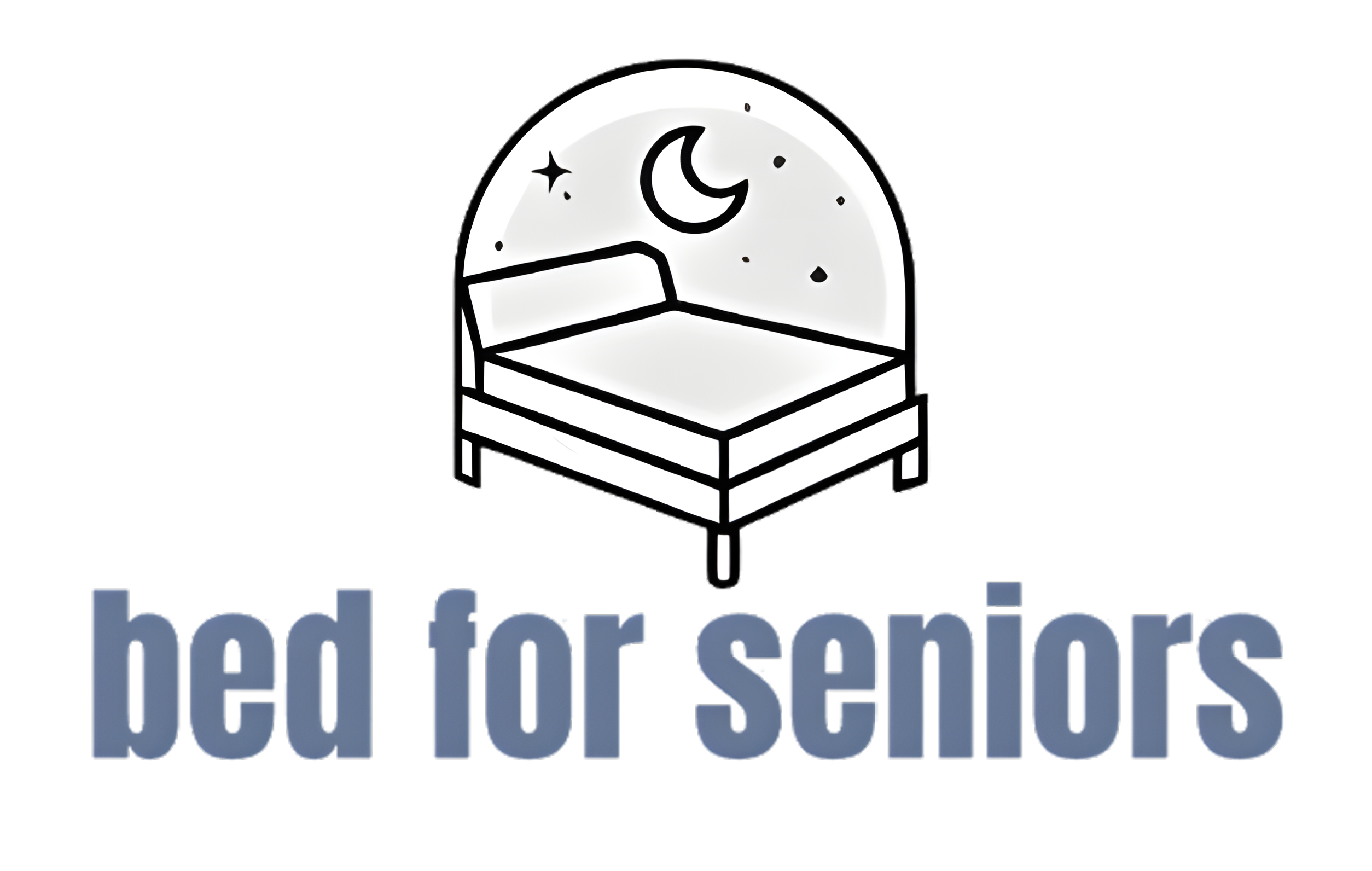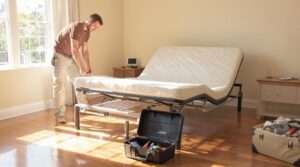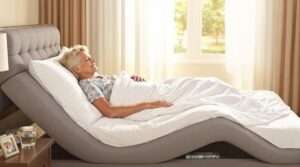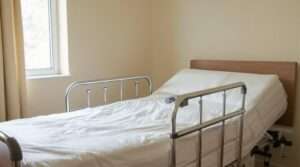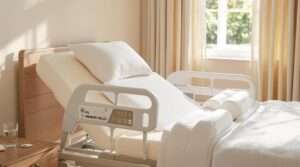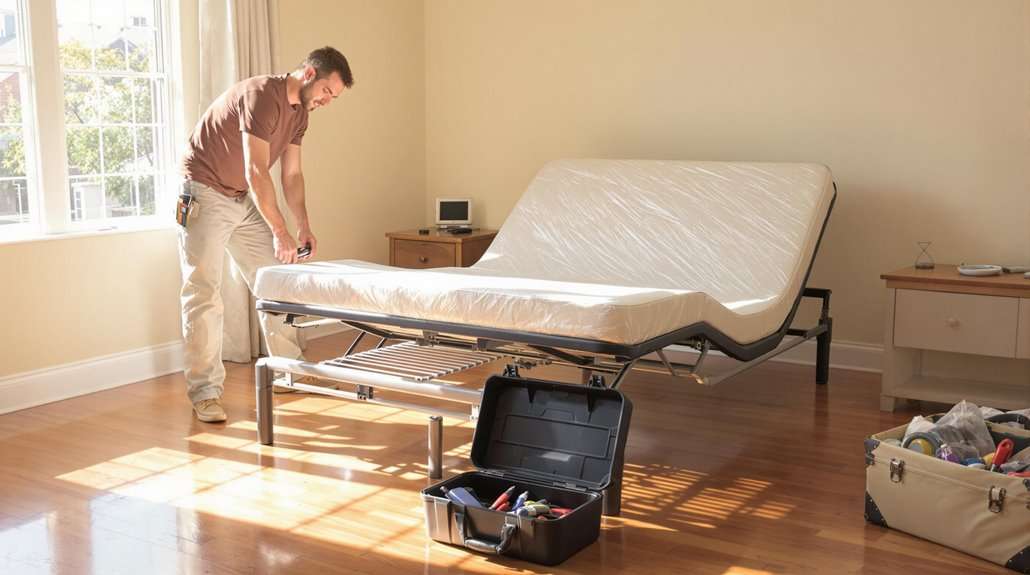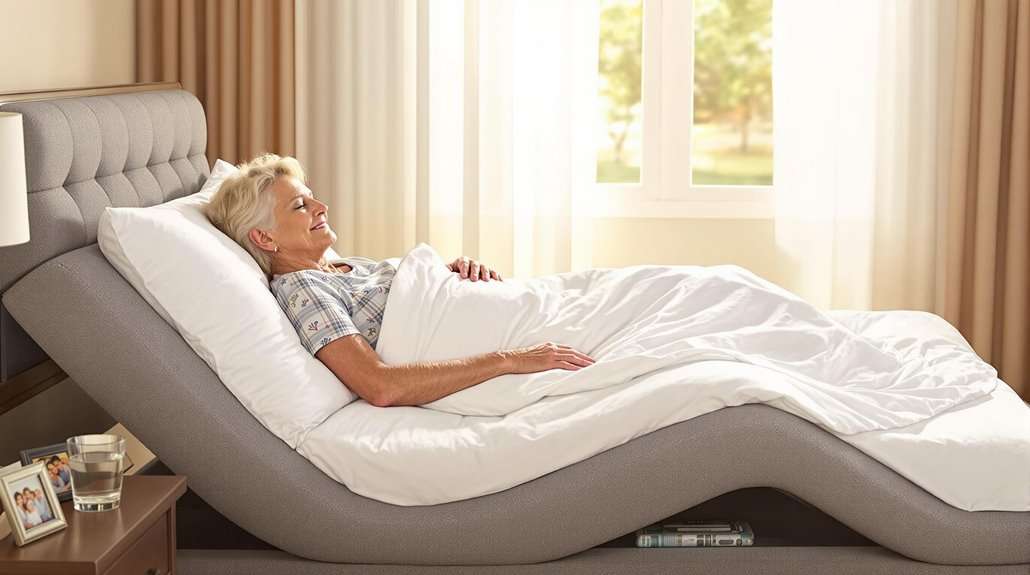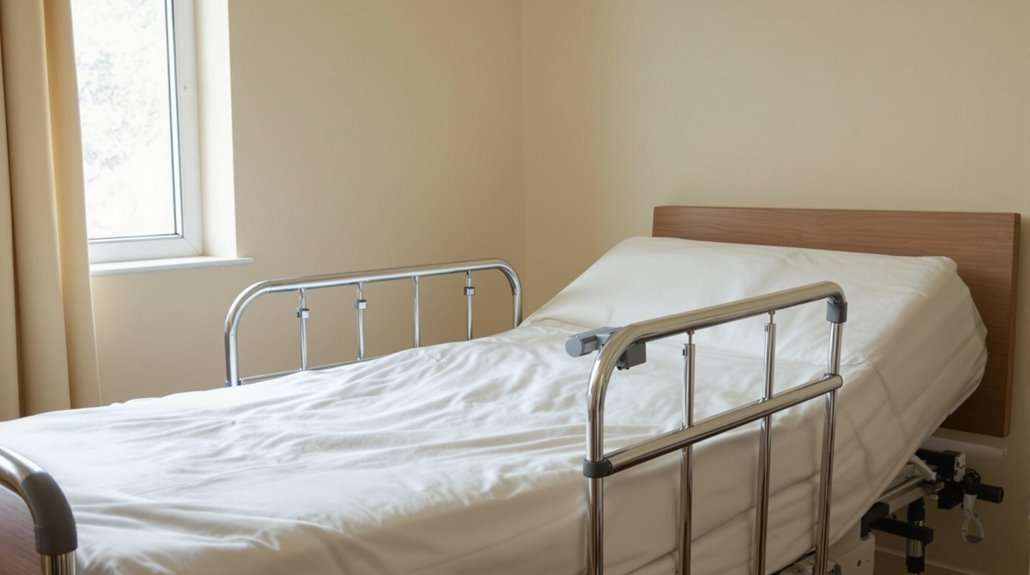Many seniors deal with health problems like back pain, acid reflux, and trouble sleeping. Adjustable beds can help fix these issues. Studies show that over 90% of older adults sleep better with adjustable beds.
This blog will explain how senior beds improve health for the elderly.
With years of experience in elderly care, we at BedForSeniors.com offer trusted advice. Adjustable beds ease pain and boost sleep quality. Learn how these beds can help your loved ones feel better.
Read on to find out more.
📋✅
- Better Sleep for Seniors: Over 90% of seniors sleep better with adjustable beds. These beds help reduce pain, insomnia, and acid reflux.
- Improves Health Issues: Adjustable beds lower heartburn, snoring, and sleep apnea. They also decrease leg swelling and support better blood flow.
- Promotes Independence: Seniors can adjust their beds easily with remote controls. This helps them live independently and makes caregiving easier.
- Enhances Mental Well-Being: More than half of seniors feel happier and less stressed using adjustable beds. Better sleep improves mood and reduces depression.
- Cost-Effective Care: Using adjustable beds can lower healthcare costs by reducing the need for medicines and treatments. They support overall health and well-being.
Overview of Adjustable Beds for Seniors

Adjustable beds let seniors change their bed’s position easily. They help with mobility issues and improve sleep quality.
Benefits of adjustable beds in senior care
Ninety-three percent of seniors report better sleep quality with adjustable beds. These beds help reduce chronic pain, insomnia, and acid reflux. They also ease snoring and sleep apnea, making the sleep environment more comfortable.
Improved sleep supports overall physical health and reduces the risk of heart disease.
Over half of seniors notice enhanced mental health using adjustable beds. Better sleep can lessen depression and improve mood. These beds promote independent living without needing assistance, which is vital for those with mobility issues.
Caregivers find adjustable beds simplify care with their safety features and easy adjustments.
Adjustable beds have transformed my sleep and eased my chronic pain significantly.
Common types of adjustable beds for seniors
There are several adjustable beds designed for seniors. Hospital beds offer features like side rails and overbed tables. Home adjustable beds, such as those from Saatva and Sealy, provide easy-to-use adjustments and preset positions.
Memory foam mattresses from Tempur-Pedic and Nectar help reduce pressure sores and chronic back pain. Puffy beds offer customizable leg heights and under-bed lighting for safety. These beds range in price from $899 to $4,798, ensuring options fit different budgets.
Choosing the right type can improve sleep disorders and reduce issues like heartburn and varicose veins.
Next, explore the health advantages of adjustable beds for seniors.
Health Advantages of Adjustable Beds for Seniors
Adjustable beds help seniors ease body pain and enjoy better sleep by letting them change bed positions. These beds also support independent living, so seniors need less help from caregivers.
Alleviates body pain and offers instant relief
Adjustable beds provide seniors with quick pain relief. Changing the bed’s position reduces pressure on joints and the back. This helps ease discomfort from arthritis, cardiac disease, or swollen legs.
Ninety-three percent of seniors experience better sleep quality. Instant relief allows elders to rest comfortably without needing help.
Fosters independent living without assistance
Adjustable beds let seniors control their bed positions with a wireless remote. They can lift the head or feet to feel more comfortable. This helps reduce bedsores and supports those with cognitive impairments.
Movement-activated night lights and remote flashlights make the bedroom safer. Seniors can move and find things at night without needing help. These features promote independent living and improve overall health.
“Independent living boosts seniors’ confidence and well-being.”
Promotes better quality sleep
Better sleep helps seniors stay healthy. About 34% of adults over 60 have trouble falling or staying asleep. Adjustable beds help find the best position for each person. This can reduce pain and improve mood.
Quality sleep lowers the risk of dementia and other mental health issues. Seniors with obstructive sleep apnea benefit from settings that support their breathing. Good sleep also lessens depression and other psychiatric disorders.
Adjustable beds make it easier for seniors to rest well, boosting their overall well-being. Improved sleep helps manage chronic diseases like hypertension and heart disease.
Reduces acid reflux and heartburn
Adjustable beds help reduce acid reflux and heartburn by raising the head. This keeps stomach acid from moving into the throat. Caregivers find it easier to care for seniors with hiatus hernia and other health conditions.
Studies show that 70% of users feel less discomfort. Using these beds can lower health care costs by reducing the need for medicines and treatments.
Raising the upper body also improves sleep patterns and decreases night-time heartburn. Adjustable beds follow medical professionals’ advice. They support seniors with major depressive disorder (mdd) and other health issues by providing comfort.
With easy adjustments, caregivers can quickly set the bed to fit each person’s needs.
Helps with snoring and sleep apnea
Following the reduction in acid reflux and heartburn, adjustable beds help with snoring and sleep apnea. Elevating the head supports open airways, making breathing easier. This reduces snoring and sleep apnea episodes.
Using continuous positive airway pressure (CPAP) alongside provides better sleep quality.
Reduces inflammation or swelling in the legs
Adjustable beds help reduce oedema in the legs. Elevating the legs improves blood flow. This position decreases swelling and eases discomfort. Caregivers find it easier to manage leg swelling with these beds.
Less swelling can lower the risk of cardiovascular disease. Seniors sleep better and enjoy reduced leg inflammation, enhancing their overall health.
Next, explore the key features that make senior beds so effective.
Key Features of Senior Beds
Senior beds offer easy-to-use controls that let you adjust positions with just a few presses. Features like adjustable leg heights and built-in lighting make daily life safer and more comfortable for older adults.
Easy-to-use adjustments
Adjustable beds feature easy adjustments with user-friendly remote controls. Seniors use large buttons to change positions quickly. Smooth mechanisms ensure quiet, effortless movements.
Caretakers find simple controls save time and reduce strain. Independent adjustments enhance comfort and support health benefits.
Preset positions for comfort
Preset positions in adjustable beds like the Saatva Adjustable Base Plus enhance senior comfort. This bed includes one customizable preset button and four preprogrammed positions. Caregivers can quickly switch settings to relieve body pain and improve sleep quality.
These preset options support independent living, reducing the need for constant assistance and enhancing care services.
Customizable leg heights
Customizable leg heights let seniors set their bed to the perfect level. This helps them get in and out of bed with ease. The Saatva Adjustable Base Plus has removable legs that can be adjusted from 13 to 18 inches.
Changing leg heights can reduce leg swelling and improve blood flow. It supports independent living, so caregivers need less assistance.
Adjustable heights work with lumbar support to ease body pain. Seniors can find a comfortable position quickly. Health professionals recommend adjustable beds for better wellness. These beds fit well in nursing home care and at home.
Custom leg heights enhance seniors’ quality of life.
Under-bed lighting and built-in remote flashlight
Under-bed lighting enhances safety by illuminating pathways at night. Movement-activated lights turn on when seniors get up, reducing the risk of falls. These lights use minimal energy and are easy to install.
Built-in remote flashlights let caregivers control lighting without leaving their seat. Remote controls are simple, with large buttons for easy use. Caregivers can quickly provide light, helping seniors move safely.
This feature supports independent living and eases the burden on caregivers.
Remote flashlights improve nighttime visibility without disturbing sleep. Seniors can adjust the lights without struggling or needing assistance. Clear lighting helps those with Alzheimer’s disease navigate their space confidently.
Proper lighting also reduces anxiety and depressive symptoms by creating a secure environment. These features align with Medicare Part B coverage, making them accessible for many seniors.
Easy-to-use lighting solutions enhance overall care and ensure a safer home.
Enhancing Caregiver Efficiency
Adjustable beds make it easier for caregivers to move and position seniors safely. These beds reduce physical strain and save time during daily care routines.
How adjustable beds give comfort to caregivers
Adjustable beds simplify tasks for caregivers. Remote controls let you change bed positions without extra help. This reduces the need to lift or move seniors, lowering the risk of injury.
White glove delivery from Saatva, Sealy, and Tempur-Pedic ensures beds are set up correctly, saving you time and effort. Features like customizable leg heights and under-bed lighting make caregiving smoother and more efficient.
With adjustable beds, caregivers can provide better support while maintaining their own comfort. Easy adjustments promote independent living for seniors, lessening the daily demands on caregivers.
This leads to less physical strain and more quality time for both caregivers and those they care for. Reliable delivery options, including free services from Saatva and Tempur-Pedic, make obtaining these beds hassle-free.
Ease of caregiving with hospital-level comfort features
Hospital-level features in senior beds make caregiving easier. Easy adjustments let you change bed positions without heavy lifting. Preset settings save time and reduce physical strain.
Built-in remote flashlights and under-bed lighting help you move safely at night. Custom leg heights provide comfort without constant assistance. These features streamline tasks and enhance caregiver efficiency.
Next, we will compare hospital beds and adjustable beds to determine the best choice for senior care.
Comparing Hospital Beds and Adjustable Beds
Hospital beds and adjustable beds both offer unique benefits for seniors, but they serve different needs. While hospital beds are ideal for medical settings with features like side rails, adjustable beds provide flexibility and comfort for home use.
Differences in functionality and suitability
Adjustable beds offer flexibility for seniors managing multiple health issues. They allow easy changes to head and foot positions, which helps reduce acid reflux and snoring. These beds support independent living by enabling seniors to adjust their positions without assistance.
Features like customizable leg heights can decrease swelling in the legs. In contrast, hospital beds include advanced medical functions suited for acute care. They support complex medical needs and are ideal for short-term use in medical facilities.
While hospital beds are perfect for temporary medical situations, adjustable beds are better for long-term home care and enhancing daily comfort for the elderly.
When to choose each type for senior care
Select hospital beds when seniors require extensive medical support. These beds offer features like height adjustment and side rails, essential for those with severe medical conditions.
Medicare may cover these beds if they are classified correctly, easing the financial burden. For seniors who need more comfort and independence, adjustable beds are ideal. They help reduce pain, improve sleep quality, and allow easy repositioning without assistance.
Choose adjustable beds to support daily living and enhance overall well-being.
Real-life Impact of Adjustable Beds on Seniors’ Health
Many seniors share how adjustable beds improved their daily lives. They experience less pain and enjoy deeper, more restful sleep each night.
Testimonials from seniors experiencing improved quality of life
Ninety percent of seniors report better sleep with adjustable beds. Mary, 75, says her pain has lessened since she started using one. She sleeps through the night without waking up.
Over half of the users feel happier and less stressed. Tom, 80, shares that his mental health has improved. He no longer feels as depressed. Caregivers notice their loved ones are more active and positive.
Adjustable beds help reduce sleep deprivation and support overall well-being.
Survey results on sleep improvement and health benefits
A survey of 600 seniors using adjustable beds found that 93% experienced better sleep quality. Improved sleep helps manage comorbid conditions and supports caregivers in providing effective care.
Frequently Asked Questions
Have questions about senior beds? Our Related Questions answer Medicare coverage, bed heights, and more.
Will Medicare pay for adjustable beds for older adults?
Medicare may pay for adjustable beds if a doctor deems them medically necessary. These beds help with issues like pressure sores, limited mobility, or heart conditions. A prescription from your primary care physician is required.
The bed must be classified as a pressure-reducing surface or a hospital bed for coverage.
What height of adjustable bed is best for older adults?
Adjustable beds for older adults should have a height between 13 and 18 inches. This range makes it easier for seniors to get in and out of bed safely. The Saatva Adjustable Base Plus offers removable legs within this height, providing flexibility and stability.
Caregivers find that beds in this height range reduce the risk of falls and make daily care tasks simpler. Choosing the right height supports independent living and enhances overall comfort for the elderly.
Senior beds ease many health problems for older adults. They reduce pain and help seniors sleep better. More than 90% of seniors say their sleep has improved. Caregivers also find these beds make their jobs easier.
Choosing a senior bed can greatly improve your loved one’s well-being.
Related Questions
1. How do senior beds help with physical health issues?
Senior beds with innerspring mattresses support the body and keep windpipes open. They help reduce medical disorders and ease morbidities, making it easier for the elderly to rest.
2. Can senior beds improve mental health for the elderly?
Yes. Comfortable beds improve sleep, which can lessen psychological problems and mental disorders. This support helps mental health professionals manage conditions like dysthymia.
3. How do senior beds assist caregivers and doctors?
Senior beds make it easier for primary care physicians and mental health professionals to care for the elderly. They facilitate access to mental health services and help manage psychiatric conditions.
4. Do senior beds help with managing mental illnesses?
Senior beds provide comfort that supports the use of antidepressants and other treatments. They help reduce mental illness and psychiatric problems by improving overall mental status.
5. Are senior beds covered by medical insurance?
Many medical insurance plans cover senior beds as part of caring for the elderly. This coverage helps address both mental and medical disorders within the U.S. health care system.
